Contents
1 Title Page 2 Scenario Page 3 Introduction 4 First Course of Action Questions 5 First Course of Action Answers 6 Hazard Assessment Questions 7 Hazard Assessment Answers 8 Risk Assessment Questions 9 Risk Assessment Answers 10 Strategic Consideration / Tactical Action Questions 11 Tactical Action Questions 12 Resources and Assets Excercise 13 Containment and Recovery Equipment 14 SummaryHazardous Liquid Pipeline Spill
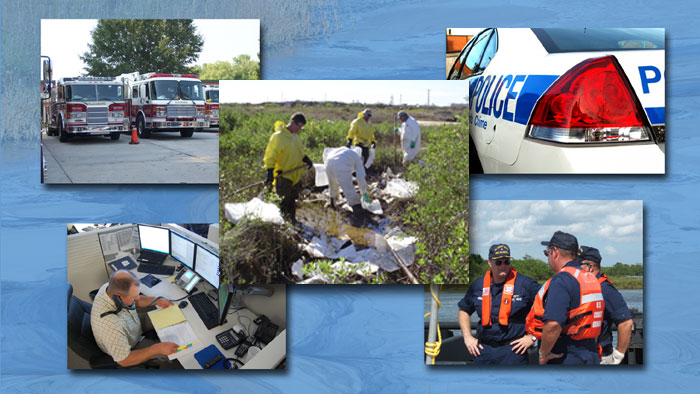
Photo Images Courtesy of:
BP America
El Paso Corporation
Zachery Jensen’s Photostream
United States Coast Guard
Joe Leonard
United States Environmental Protection Agency
Harris County Fire & Sheriff’s Training Academy
Chief Bob Royall
Michael Callan
Proceed »Scenario Page

In this scenario a 24 inch high pressure hazardous liquid pipeline has been breached. The breach occurred as a result of a contractor doing excavation work.
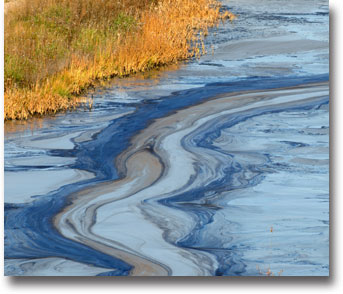
First responders report there is product in Crystal River. Immediate downstream exposure concerns include two bridges: a local bridge, about 2 miles downstream and a major Interstate bridge about 4 miles downstream. A local community, Riverbank City, is 6 miles downstream.
Product appears to be moving rapidly downstream and initial estimates are that it could reach the local bridge in 20-30 minutes. There are several residents asking questions. Is the product poisonous or flammable? Some say it is not hazardous, but ask if it is gasoline or diesel. Others suggest the product may be natural gas. This incident is already being described as a major spill by first responders on the scene.
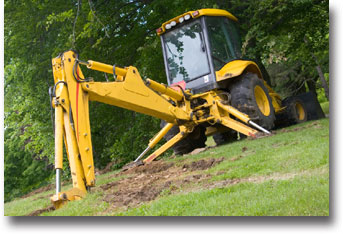
The break is in close proximity to where the pipeline crosses Animas creek. Animas is a small creek. It is normally dry in the summer but currently contains runoff from the spring thaw and several days of continuous rain. There is a considerable amount of product running down the bank into the creek.
The creek is approximately one quarter mile from Crystal River. The creek flow is slow to moderate (1.5 to 2 mph). Crystal River is moving with a medium current. Product is flowing down the creek and is just entering the river when initial responders arrive on scene.
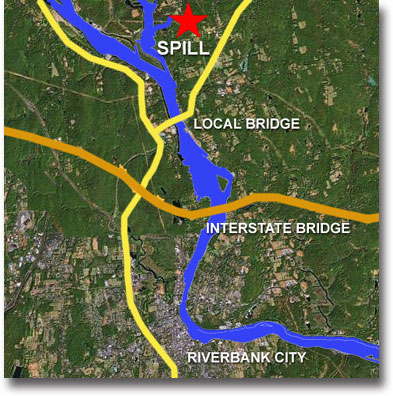
IntroductionProceed »
First Course of Action Questions
You are the first responder on the scene.
What is your first course of action?
Below are several actions you might perform.
Drag and drop a numerical value next to each task in the order you believe you should proceed
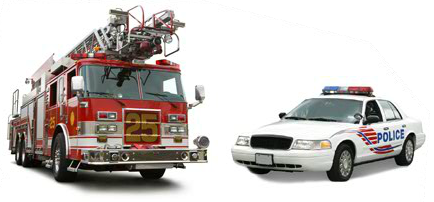
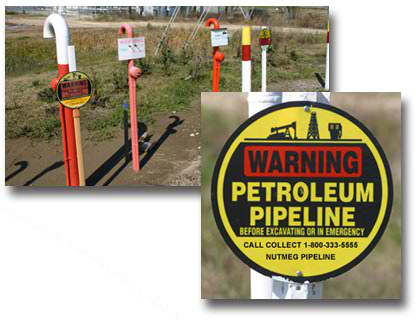
First Course of Action AnswersProceed »
Hazard Assessment Questions
You now know the product is crude oil and the pipeline operator has provided you chemical specific information from their material safety data sheet. To determine the degree of danger to the public you must first assess the hazards, then you can begin to analyze risk.
Answer the hazard related questions below.
Is this product flammable?
Is it mixing with water?
Will it sink in water?
Your team is getting 5% to 6% of the LEL on the river bank. Is that flammable?
Is this level toxic?
Yes No
Yes No
Yes No
Yes No
Yes No
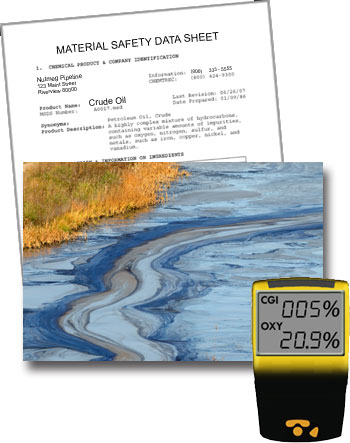
Hazard Assesement AnswersProceed »
Risk Assessment Questions
Determining the risk and which strategies and tactics to employ is a big part of the response effort in this type of scenario.
Answer the risk related questions below.
Would you stop traffic on the river?
Would you evacuate homes and houseboats on the shore?
Would you stop traffic on the local bridge?
Would you stop traffic on the Interstate bridge?
Would you evacuate inland and downstream?
Yes No
Yes No
Yes No
Yes No
Yes No
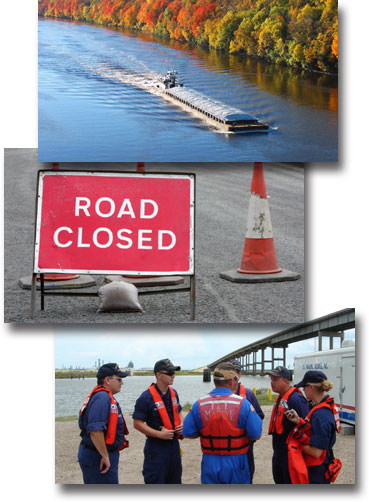
Risk Assessment AnswersProceed »
Strategic Consideration / Tactical Action Questions
Drag and Drop each picture into the appropriate mode. When finished click on "Check Answers"
Offensive ?
Offensive Mode
Offensive mode operations commit response resources to aggressive leak and fire control objectives. This mode is designed to quickly control or mitigate the problem, but it can increase the risk to emergency responders.
The offensive mode may be justified if:
- Rescue operations can be quickly achieved
- The leak can be rapidly confined or contained
- The fire can be quickly extinguished
Offensive Mode
Offensive mode operations commit response resources to aggressive leak and fire control objectives. This mode is designed to quickly control or mitigate the problem, but it can increase the risk to emergency responders.
The offensive mode may be justified if:
- Rescue operations can be quickly achieved
- The leak can be rapidly confined or contained
- The fire can be quickly extinguished
Defensive ?
Defensive Mode
Defensive mode operations commit response resources to less aggressive objectives. This is achieved by using specific types of defensive tactics such as protecting exposures, evacuation and constructing dikes or dams to contain the product.
Defensive Mode
Defensive mode operations commit response resources to less aggressive objectives. This is achieved by using specific types of defensive tactics such as protecting exposures, evacuation and constructing dikes or dams to contain the product.
Non
Intervention ?
Non-Intervention Mode
Non-intervention means taking no action other than isolating the area. Emergency responders should wait out the sequence of events. This usually produces the best outcome when offensive or defensive strategic goals will place responders atan unacceptable risk. For example in a BLEVE situation, the potential costs of action far exceed any benefits.
Non-Intervention Mode
Non-intervention means taking no action other than isolating the area. Emergency responders should wait out the sequence of events. This usually produces the best outcome when offensive or defensive strategic goals will place responders atan unacceptable risk. For example in a BLEVE situation, the potential costs of action far exceed any benefits.
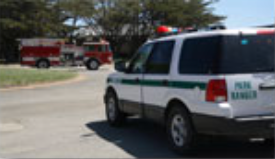
1) Evacuate occupants from nearby homes
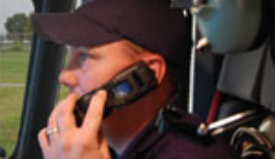
2) The product is flowing into the creek. Keep responders back and contact the Pipeline Operator
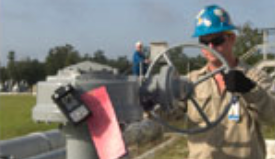
3) Pipeline Operator begins to shut valves and block the leak
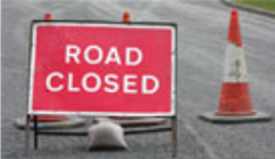
4) Secure roads and keep everyone back and away

5) Notify County dispatch and have them contact the Pipeline Operator
Tactical Action AnswersProceed »
Resources and Assets Excercise
Responding to emergencies like this requires help from resources and individuals from local to national levels.
Roll over each response level for a list of response agencies at that level.
LOCAL
Local Resources and Assets
Fire
Police
EMS
Public Works Community Officials

COUNTY
County/Regional Resources and Assets
Sherrifs
Haz Mat Teams
County EMS
Mutual Aid

STATE
State Resources and Assets
State Police
Emergency Management
Public Health
DHS

FEDERAL
Federal Resources and Assets
Coast Guard
PHMSA
FEMA
DHS
EPA

PIPELINE OPERATOR
Pipeline Operator/Private Resources and Assets
Pipeline Operator
Private Contractors
Commercial Response
Clean Up Companies
Mutual Aid Associations

Look at the tasks below and determine which response group or agency would best accomplish each task.
Now drag and drop an image of that group or agency next to each tasks.
The "correct" answers for where resources and assets could come from will differ depending on your location. For examples, some county agencies may not be able to determine how much foam is needed to suppress vapors while others will be able to assist in that need.
Proceed »Containment and Recovery Equipment
Strategies, tactics and equipment used in major oil spills are classified into two general operations, containment and recovery.
Roll over each term below for more detail.
Containment
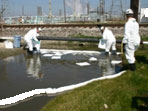
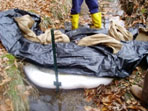
Containment
Containment is the process of preventing a spill from spreading by containing the product to the area in which it was released.
Containment not only localizes the product but it also makes it easier to recover and remove the product. Common containment equipment are booms, dikes and dams.
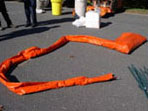
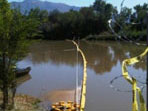
Reusable Booms


Reusable Booms
Booms are devices that are generally used for petroleum products. They are designed to direct and contain floating hydrocarbons. Soom booms are designed for hazardous materials such as acids, bases and solvents. Booms are referred to as fence booms and curtain booms.
Specialized booms and sorbent booms may be used when the product on the surface is relatively thin.
Advantages: Booms are helpful to contain the flow and slow the spill.
Disadvantages: When used in rough water, swells or if there is a large amount of product you run a risk that the product may get around the boom.
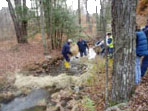
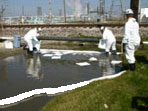
Sorbent Booms


Sorbent Booms
Sorbent booms are made of organic and synthetic materials. Organic materials can include hay, straw, ground corn cobs, and sawdust. Inorganic booms are vermiculite (silicates) and perlite (natural volcanic ash). Synthetic booms are made of nylon, polystyrene, and polyester
Advantages: Booms are effective if the right boom is chosen for the product and depth. They are aailable in sheets, rolls, pillows and booms.
Disadvantages: Booms can sink. They must be water repellant.
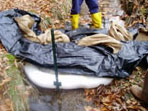
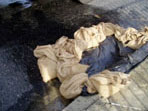
Dikes & Dams


Dikes & Dams
Dikes and dams are used in the street, shallow creeks and streams. Dikes and dams can be constructed similar to a boom or as an overflow or underflow dam.
Advantages: Dikes and dams can be constructed quickly and effectively in cases of a smaller spill.
Disadvantages: Dikes and dams are not effective with large amounts of product, or in fast moving or deep streams and creeks.
Recovery
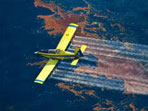
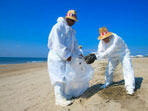
Recovery
Recovery is the process of removing product from water. There are several techniques for recovering product:
- Skimmers
- Sorbents
- Manual Recovery
- Chemical Agents
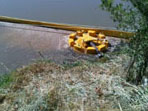
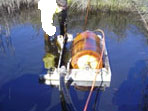
Skimmers


Skimmers
A skimmer is a mechanical device that can recover and remove product from the surface of water. There are several types of skimmers, including weird, suction, centrifugal, submersion and sorbent surface.
Advantages: A skimmer can remove large quantities of product, has a shallow draft and is effective for several types of hydrocarbons.
Disadvantages: Susceptible to wave action and clogging.
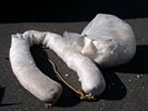
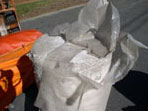
Sorbents


Sorbents
A sorbent is a material which will recover product through either absorption or adsorption.
In absorption, the oil actually penetrates the surface of sorbent material. In adsorption, the oil is attracted to and adheres to the surface of sorbent material.
Advantages: Sorbents can pick up or capture oil 5-15 times their weight.
Disadvantages: Some sorbents are difficult to apply because they blow int he wind. Others are hazardous and require operators to wear breathing apparatus.
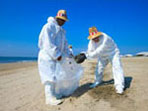
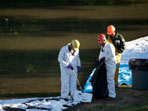
Manual Recovery


Manual Recovery
Manual recovery is needed when products must be recovered "one bucket" at a time.
Advantages: This can be very effective in areas that cannot be reached by technological equipment.
Disadvantages: This process is very labor intensive.
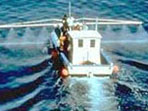
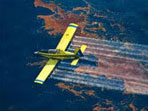
Chemical Agents


Chemical Agents
Chemical Agents are designed specifically for petroleum products and are usually classified by their effect on the product. The agents can be:
- Collection agents
- Burning agents
- Neutralizing
- Sinking agents
- Dispersants
- Gelling
- Biological agents
- Solidifying
Advantages: The right removal technique can be used for the specific problem or product.
Disadvantages: Very limited in the amount of product that can be recovered and in many cases the "secondary by product" can also be hazardous.

